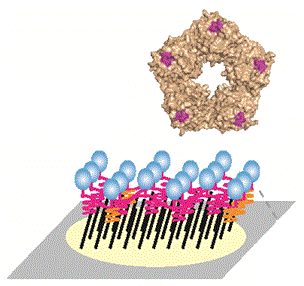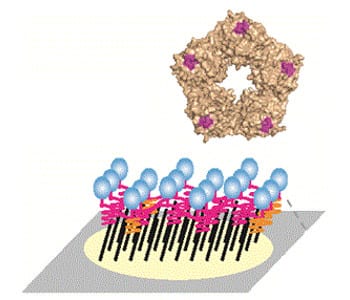 Pathophysiological responses in a tissue, no matter the cause, are characterized by dramatic changes of bio-molecular activities in the local tissue microenvironment. Our understanding of disease development and ability to administer critical treatment depends heavily on the amount of accurate information we can collect from the molecular tissue microenvironments at any time. To date, however, no sensing platform has been able to achieve this on molecular level.
Pathophysiological responses in a tissue, no matter the cause, are characterized by dramatic changes of bio-molecular activities in the local tissue microenvironment. Our understanding of disease development and ability to administer critical treatment depends heavily on the amount of accurate information we can collect from the molecular tissue microenvironments at any time. To date, however, no sensing platform has been able to achieve this on molecular level.
Now, a biomimetic interface that models the progression of inflammation/infection has been developed that allows researchers to investigate biomolecular dynamics changes in local microenvironments.
The concept is based on the use of an engineered cell-membrane-mimetic surface, where a custom polymer mimics phosphorylcholine as an alternative receptor for C-reactive protein on the eukaryotic cell-membrane. The C-reactive protein binds to damaged host cells or invading microbes at the site of inflammation thus activating the complement pathway leading to clearance by innate-immune cells.
Using this new system, researchers were able to show that local ionic microenvironments are an essential parameter in transforming C-reactive protein binding kinetics and in turn that site-selective activation of circulating C-reactive protein play an important role in damaged tissue.
By presenting a more coherent picture of the host response in which the active local form of C-reactive protein is obviously different from measuring systemic C-reactive protein level, the biomimetic interface proves itself to be a powerful tool in revealing the whole picture of well-organized acute phase responses at molecular resolution.

















